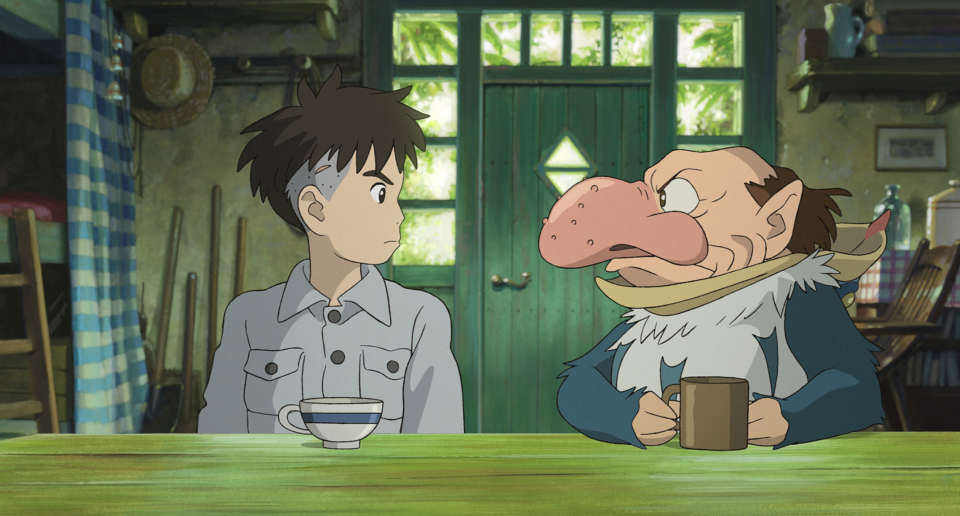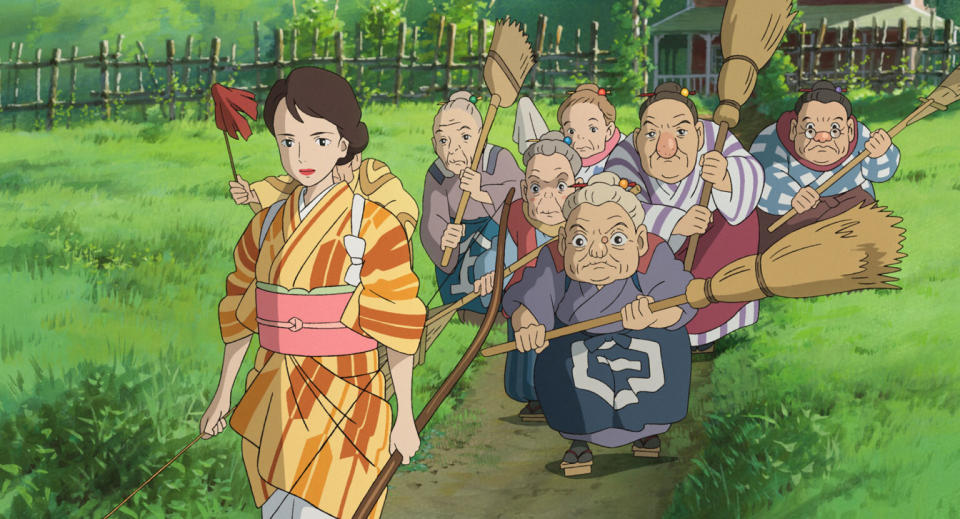‘The Boy and the Heron’ Theme Began Life as a Birthday Gift for Miyazaki

- Oops!Something went wrong.Please try again later.
- Oops!Something went wrong.Please try again later.
“The Boy and the Heron” marks the 14th collaboration between Hayao Miyazaki and Joe Hisaishi (yes, the “Ocean Waves” trailer music counts; it’s a banger). But even after almost four decades of working together, the animator and the composer are finding new ways to create new sounds. “The Boy and The Heron” is the story of Mahito (Soma Santoki), a young man who leaves the firebombing of Tokyo for the Japanese countryside in World War II, and then ends up guided by the titular Heron (Masaki Suda) to a completely different place in order to rescue his stepmother Natsuko (Yoshino Kimura) from the clutches of otherworldly forces. And also a lot of birds.
But parakeets hungry for human flesh aren’t the only novel thing about “The Boy and The Heron.” Hisaishi has in the past described his Studio Ghibli scores as a two years on, two years off cycle. When releasing the “Symphonic Celebration” Ghibli collection with the Royal Philharmonic Orchestra, Hisaishi said that because Miyazaki had a rhythm of releasing a film about every four years, he’d spend two years working really hard on the score of, say, “Howl’s Moving Castle,” and then have two years off to recover before diving into the score of “Ponyo.”
More from IndieWire
Of course, there are more than four years between Miyazaki’s “The Wind Rises” and “The Boy and the Heron,” but for a film so long in the making, Hisaishi’s work was maybe the most concentrated of any score he’s done for Studio Ghibli.
“It was completely different from what I had done before,” Hisaishi told IndieWire. The composer first saw the film on July 7, 2022, about six months before its completion, without looking at any scripts or storyboards prior. “Usually, when a Studio Ghibli film gets to 40 percent, 50 percent, I get a lot of content, but this time I didn’t get any of that. [The film] was about 95 percent done, so it was in the very late stages of filmmaking.”
After the screening, Hisaishi said that Miyazaki told his longtime musical collaborator that “he would leave everything to me,” from the overall tones, orchestration, and instrumentation choices to where to put music. “Normally, it’s very important to have meetings about music with the director, but this time there was nothing like that, and I was just left to do it,” Hisaishi said.
In place of conversations or studying storyboards for tone and feeling, Hisaishi drew on music that had a connection to Studio Ghibli itself. “About a year ago for Mr. Miyazaki’s birthday, I composed a short tune as a birthday present, and apparently he liked it very much and he told the staff around him that this should be the theme for his next film,” Hisaishi said. “I realized that the tune was very close to what he was thinking of, so I thought that would be good to use in crucial parts in the film.”

But just like Hisaishi’s process of scoring the film, the main theme for “The Boy and The Heron” is unlike others in the composer’s previous collaborations with Studio Ghibli. Hisaishi was struck by a clear divide between the film’s first and second hours and decided to take different approaches to the dwindling days of War World II-era Japan and the world of the Heron, which is much more expansive and fantastical.
Hisaishi mirrors this with a minimalist approach, having very few instruments appear in the first half of “The Boy and the Heron.” In the second half, the musical palette gets bigger, creating a view “of heaven and hell,” according to Hisaishi, as only a full orchestra can. But the main theme, “Ask Me Why,” doesn’t necessarily unfold and develop into something bigger each time it appears. Hisaishi keeps it small and personal, playing the piano part himself, so that it feels like something at the core of Mahito’s heart.
“There’s only three times that [the ‘Ask Me Why’ theme] is present, but I play it pretty much the same way with piano and strings only,” Hisaishi said. “I thought it would be good to have these short pieces in the film and it would be a very effective way to score the film.”
Normally in any film, be it animated or live-action, the image provides a key context and the score can sweep under or over it; the music offers the audience deeper insights into the characters, world, or tone. But the score of “The Boy and the Heron” is a lifeline through the world into which the Heron guides Mahito, helping audiences feel their way through their vast, strange adventure. The music is simple and direct, making all the more impactful Hisaishi’s instinct for eclectic harmonies and spacing notes so that the breaths between them feel alive.

The kind of minimalism that Hisaishi drew on was influenced as much by Terry Riley and Phillip Glass as by the classical Western composers often cited as comparisons to his work. He’s proud he maintained a minimalist sensibility across the whole of the film. It’s not the norm with orchestral film scores, but helps the music of “The Boy and The Heron” feel as vital and strange as the film’s setting.
“We don’t really create a specific rhythm,” Hisaishi said. “Mr. Miyazaki was very happy with the music I wrote, and he said that it was minimalistic. He said, ‘There’s nothing like this.’”
Best of IndieWire
Where to Watch This Week's New Movies, Including 'Wonka' and 'The Zone of Interest'
2023 Movies Shot on Film: From 'Oppenheimer' to 'Killers of the Flower Moon' and 'Maestro'
Quentin Tarantino's Favorite Movies: 59 Films the Director Wants You to See
Sign up for Indiewire's Newsletter. For the latest news, follow us on Facebook, Twitter, and Instagram.

